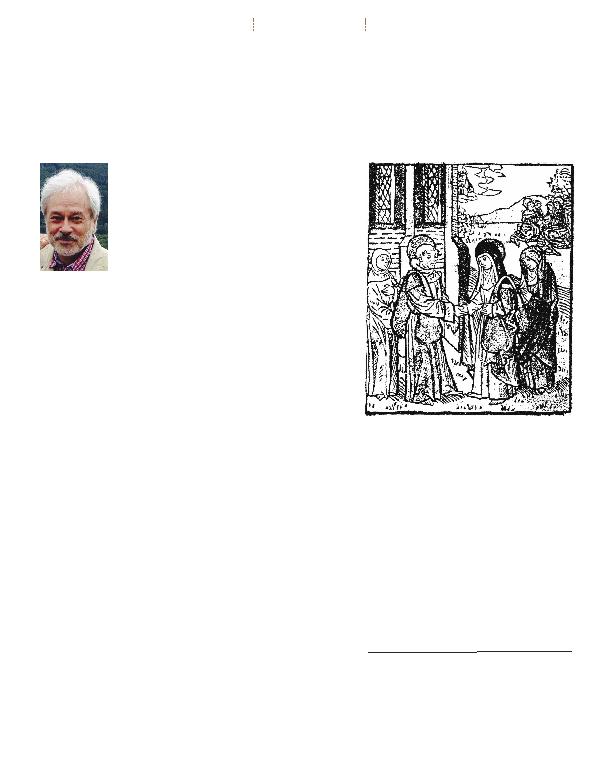
service. Instead of competition, she preferred collabo-
ration. Unemployment did not seem to have been a
problem. Time management was generating calm-
ness and not stress.
that we are part of creation, like Francis, we should
be careful in the way we treat the earth because she
is the source of our subsistence.
today, as do Francis and the first brothers and sisters.
Like all of us, Clare led a real life, with real problems
and real people. She showed leadership. She can still
inspire us.
eral and managing editor of the journal Franciscan
Studies.)
woman, a wonderful woman
upside down to follow in the footsteps of Jesus
Christ would soon start a movement, that men
nitas. That movement, however, would not be what
it is without an amazing, wonderful woman also
from Assisi, Lady Clare, who became Francis' friend,
sister and accomplice in that great endeavor.
one, in the shade, just a chapter in Francis' life, liter-
Clare drew the attention and admiration of Sr. Margaret Carney, who in
the late 1980s, after receiving a master's degree in Franciscan studies at
St. Bonaventure University, went to Rome "to study the manner in which
... Clare of Assisi manifests the feminine experience of the Franciscan vo-
cation," to study the first Franciscan woman.
patiently fought a lifetime struggle to be able to live according to what
God had inspired her, no matter who would tell her differently. She was
a strong, consistent and persistent woman. Assertive and fearless, she
lived the realities of her daily life according to the Gospel. In doing so,
she brought God's spirit to everything she touched, to everybody she
met. Can Clare still touch us today? I believe so, and what follows is a
partial litany of possibilities.
between the haves and the have-nots. It generates exclusion. Clare broke
away from that and focused on the common good and community.
personal relationships and expressed it "like a mother cares for her
child." We can still learn from Clare how to become more compassion-
ate human beings.
dominate, disrespect and even oppress women? Clare opened the Fran-
ciscan movement, when it still was a movement of men, to the feminine
and to the full participation of women.
with everyone. Her focus was on the human being and healing was
more important than curing.
picts saints Francis and Clare.